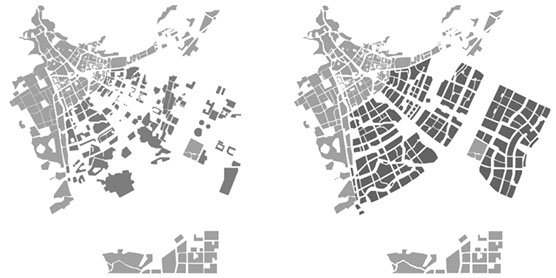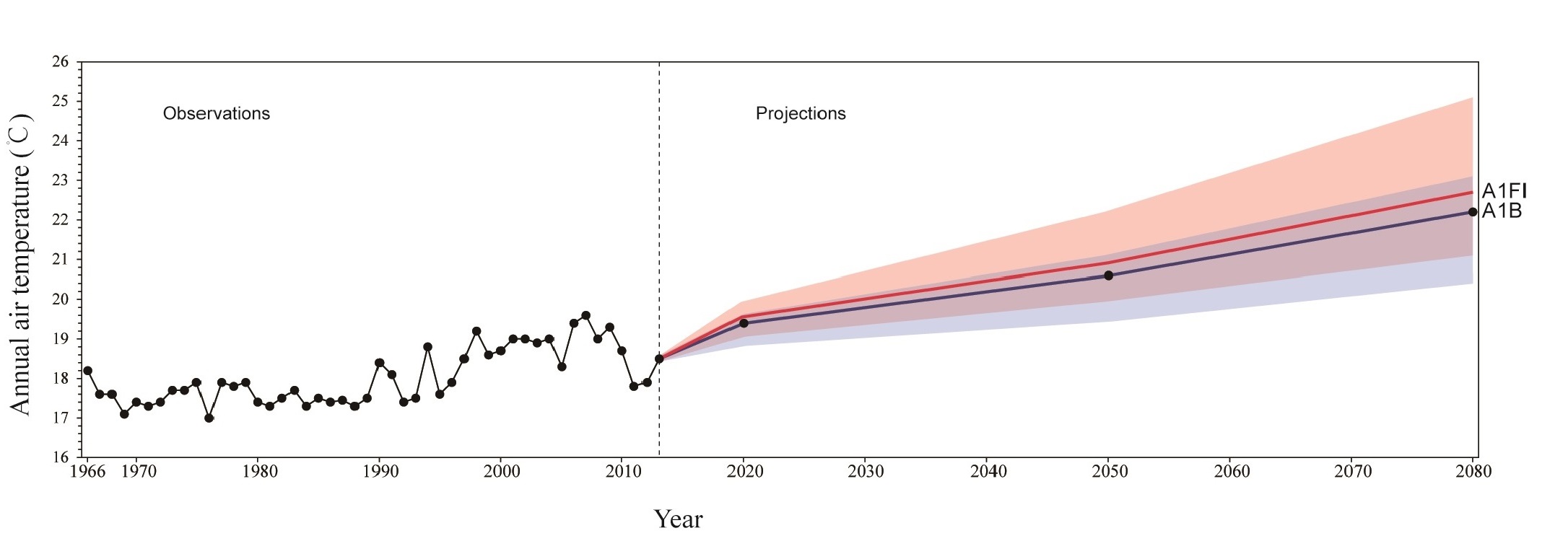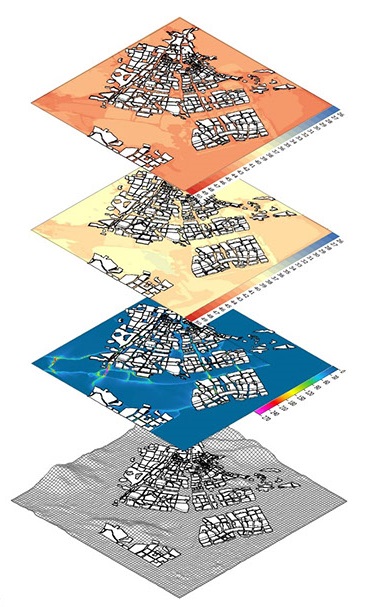Urban Climate in light of Rapid Urbanization and Climate Change: A Case of Yueqing
People: Jianxiang Huang (HKU), Yali Wang (HKU), Rong Peng (HKU), Yiyang Yang (HKU)
In previous study, environmental parameters including heat stress, air pollution, daylighting, and air ventilation for both Yueqing`s core (8km by 8km) and CP grope site is modeled using CityComfort+, climate change and future urbanization are taken into consideration.
Urbanization in Yueqing
Yueqing`s urban growth pattern is a microcosm of those that is happening in cities across China. Yueqing`s urban growth is expected to further increase the density of built environment and alter ground thermal properties due to loss of vegetation cover and water features.

Yueqing urban typology in 2009 and in the future
Climate Change in Yueqing
Annual average air temperature of Yueqing is predicted to increase 3 degree from 2005 to 2080. At present, Yueqing’s summertime heat-wave events will occasionally impose threats to the quality of life in its dense urban core. In 2080, heat stress during summer will rise significantly due to climate change and urban heat island effects, threatening the safety of residents especially the elderly and children.

Results
The study modeled 24 hour thermal comfort conditions on Jul.20, 2005, a hot summer day with high air temperature. Results show great variability of predicted thermal comfort with Yueqing`s urban core. Very strong heat stress (above 38°C) occur on most streets and plazas, with the exception of a few places with lavish tree coverage and water feature which become the ‘cool spots’ in the summer. Open spaces with hardscape paving such as plaza and parking ground feature additional heat stress in summer and they should be avoided in urban planning and design practices.
In 2080, most areas are over the threshold of very strong heat stress (24-hour mean above 38°C), with a few exceptions in the urban peripheries where cool breeze can bring the equivalent temperature down slightly. Precautionary planning and emergency strategies are due in similar events.
Aside from air pollution from regional sources, the exposure to major air pollutants (PM, NOx, etc) demonstrates uneven patterns across the city. This study seeks to quantify the air pollutants concentration through the Envi-met method, in which pollutants are coming from linear(traffic fleet) and point(buildings and industry) sources. Assumptions on emission rates are made based on provincial level traffic volume and traffic fleet statistics. Results show that the CP Group site is subject to additional exposure to air pollutants from local sources. Particulate matters(PM), NOx, and CO concentration on the CP Group sites are over three times higher than the rest of the city. (Figure 1-5)This effect becomes more significant during low wind scenario or during morning traffic rush hours. The reason is close proximity of the highway exist and major artery road. To improve health and quality of life for future occupant, preventative measures such as ventilation corridor and pollution barriers are to be taken.
Fig 1. Day Time Hourly Cumulative Thermal Comfort 6:00-18:00 On Jul. 20, 2005, Measured In UTCI Equivalent Temperature (°C) 2005年热浪日热舒适度(日间平均等效温度)
Fig 2. Day Time Hourly Cumulative Thermal Comfort 6:00-18:00 On Jul. 20, 2080, Measured In UTCI Equivalent Temperature (°C) 2080年热浪日热舒适度(日间平均等效温度)
Fig 3. Co Concentration At 10:30 21.07.2005 With The Plan Of The Original Urban Layout City Scale
Fig 4. Future Yueqing urban model
Year One report download

